Some other reports said about different rates:
| Year | Lifetime Primary Infertility (%) | Current Primary Infertility (%) | Secondary Infertility (%) | Other Definitions |
| 2009 | 24.9 | 3.4 | N/A | N/A |
| 2013 | 20.2 | N/A | N/A | N/A |
| 2014 | 5.2 | N/A | 3.2 | N/A |
| 2019 | 20.2 | 12.8 | 9.2 | Clinical: 20.2, Epidemiological: 12.8, Demographic: 9.2 |
The next step is to learn about how Iranians cope with infertility using modern technologies, good doctors, and all the services available for treatment.
Read more: Infertility Treatments in Iran
What is the prevalence of infertility in Iran?
The prevalence of infertility in Iran has been the subject of various studies, revealing concerning statistics:
- Lifetime infertility: 11.3% of couples
- Current infertility: 3.7%
- Primary infertility: 18.3%
- Secondary infertility: 2.5%
In Iran, infertility is a complicated issue. Female factors contribute to about 32% of cases, male factors to 43.3%, and both partners to 12.5%. Additionally, about 13.6% of cases are unexplained. Ovulation problems, issues with the uterus, and endometriosis are common medical issues that play a significant role in female infertility.
Source: Statista
How do Iranians cope with this issue?
Infertility is a big issue in Iran, and lots of couples are looking into different ways to deal with it. The following methods have become popular because they work well:
-
IVF (In Vitro Fertilization)
IVF is a widely used assisted reproductive technology (ART) in Iran, allowing for fertilization outside the body and subsequent embryo transfer.
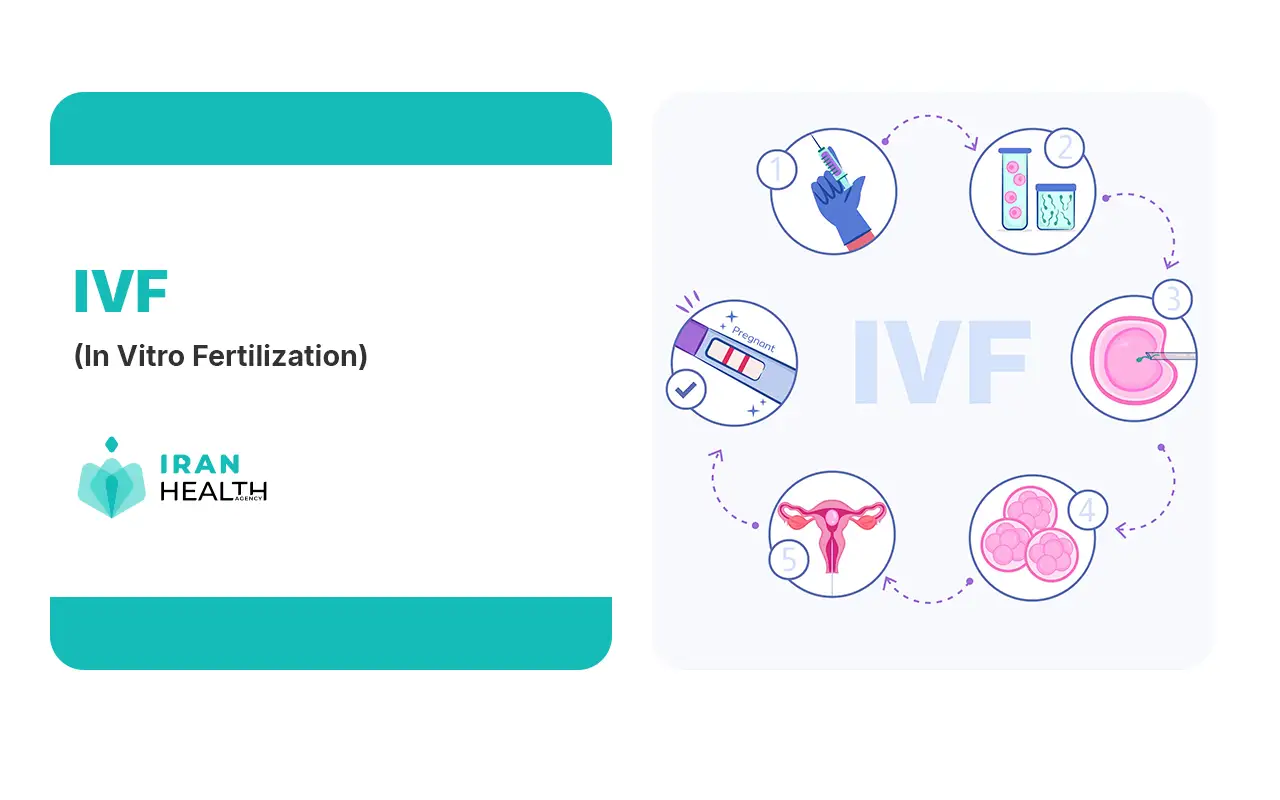
Read more: IVF in Iran
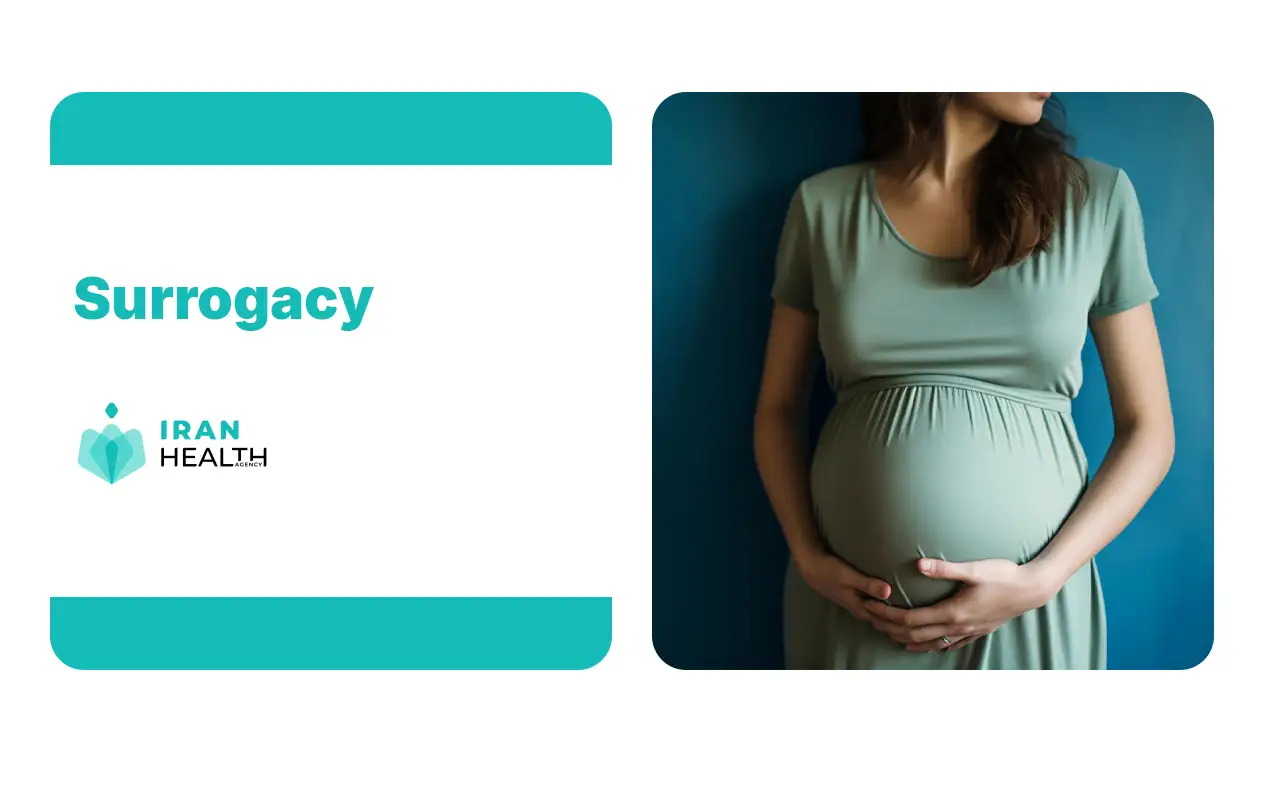
-
Surrogacy
Surrogacy is increasingly accepted in Iran, particularly under the Shiite Islamic framework, where it is viewed more favorably compared to other Muslim-majority countries.
Read more: Surrogacy in Iran
-
IUI (Intrauterine Insemination)
IUI is a less invasive procedure that involves placing sperm directly into a woman’s uterus, which has been utilized for many years in Iran.
Read more: Intrauterine Insemination in Iran
-
ICSI (Intracytoplasmic Sperm Injection)
ICSI is a specialized form of IVF where a single sperm is injected directly into an egg, often used in cases of male infertility.
Read more: ICSI in Iran
-
IVM (In Vitro Maturation)
This technique involves maturing eggs in the lab before fertilization, providing an alternative for women who may not respond well to traditional IVF.
Read more: In Vitro Maturation in Iran
-
Egg and sperm donation
Both egg and sperm donation are legally permitted and increasingly utilized in Iran, supported by religious authorities, making these options more accessible for couples facing infertility.
Read more: egg sperm and embryo donation
Success rates and Potential Risks Associated with Different Fertility Treatments in Iran include:
| Treatment | Success Rate (%) | Notes |
| IVF (In Vitro Fertilization) | 30-70% | Varies by age; 32-40% for women under 35 |
| ICSI (Intracytoplasmic Sperm Injection) | 40-45% (Under 35); 34.6% (35-39); 11.8% (Over 40) | Mirrors IVF success rates |
| Surrogacy | 60-90% | Implantation success rate ranges between 60-80% |
| IUI (Intrauterine Insemination) | 5-20% | Varies widely based on age and infertility cause |
| Egg and Sperm Donation | High (varies by age & health) | High success rates due to advanced technologies |
Important Note:
Surrogacy and egg/sperm donation are legally permitted in Iran, supported by Shiite religious authorities who have issued fatwas legitimizing these practices under specific conditions.
You can read about the banned and non-banned IVF in some countries here: what countries have banned IVF?
Infertility treatment services for foreigners in Iran
Iran’s advancements in infertility treatment have benefited its citizens and made the country a destination for medical tourism. Many foreigners travel to Iran for affordable and high-quality fertility treatments.
The Iran Health Agency is crucial in facilitating these services, offering comprehensive support for international patients. This includes arranging consultations, diagnostic tests, and treatment plans tailored to individual needs. The costs of treatments in Iran are significantly lower than in many Western countries, making it an attractive option for couples seeking fertility solutions.
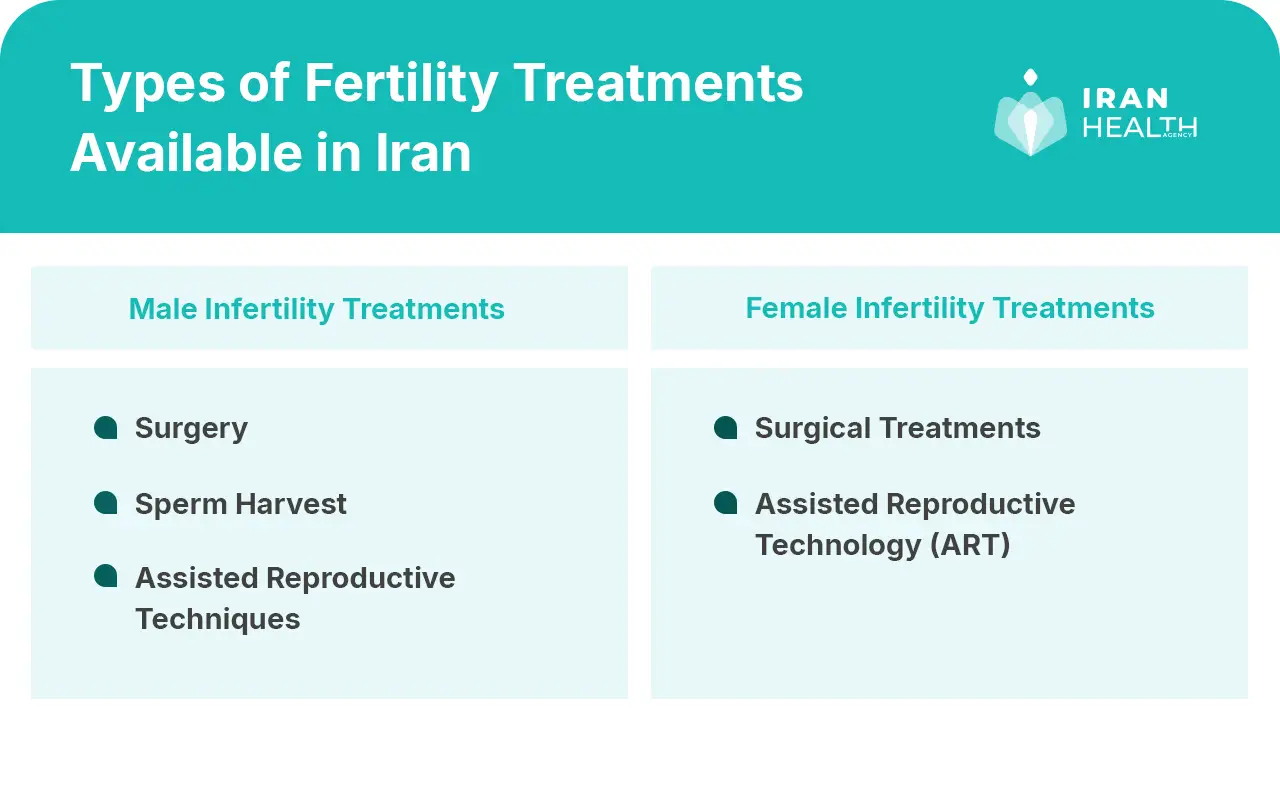
Types of Fertility Treatments Available in Iran
- Male Infertility Treatments:
-
- Surgery: Procedures such as testicular biopsy, varicocelectomy, vasectomy reversal, and correcting epididymal blockages are standard.
- Sperm Harvest: Techniques like sperm retrieval and testicular aspiration are used, especially for patients with obstructive azoospermia or ejaculation problems.
- Assisted Reproductive Techniques: Sperm retrieved can be used in Intrauterine Insemination (IUI), in vitro fertilization (IVF), or Intracytoplasmic Sperm Injection (ICSI).
- Female Infertility Treatments:
-
- Surgical Treatments: Procedures like fallopian tube surgery and laparoscopy are performed to address structural issues or conditions such as endometriosis, fibrosis, or polycystic ovary syndrome.
- Assisted Reproductive Technology (ART): This includes methods such as IVF, IUI, ICSI, assisted hatching, surrogacy, and the use of donor eggs.
Read more:Best IVF centers in Iran
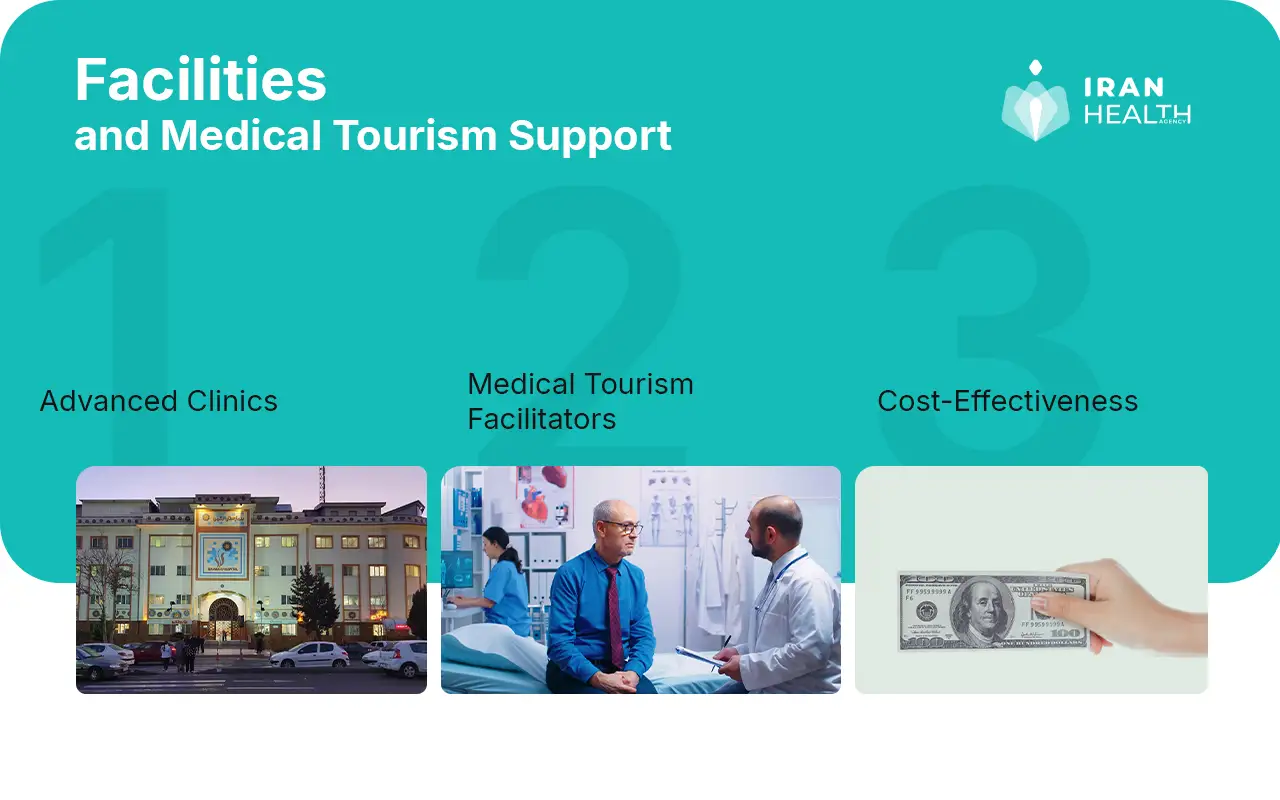
Facilities and Medical Tourism Support
- Advanced Clinics: Iran has numerous fertility clinics and centers, such as the Royan Institute, Avicenna Fertility Clinic, and Reproductive Sciences Institute, which offer comprehensive and specialized fertility treatments.
- Medical Tourism Facilitators: Companies like Hayat MedTour, Iran Health Agency, and others facilitate medical trips to Iran, helping patients arrange consultations, diagnostic tests, and treatment plans tailored to their needs.
- Cost-Effectiveness: The costs of fertility treatments in Iran are significantly lower compared to many Western countries, making it an attractive option for international patients.
Read more: Shiraz Fertility Center in Shiraz, Iran
Comprehensive Support for International Patients
While the query mentions the “Iran Health Agency,” medical tourism facilitators and fertility clinics are crucial in supporting international patients. These facilitators and clinics:
- Arrange Consultations: Patients can get free initial consultations to discuss treatment options.
- Diagnostic Tests: Comprehensive diagnostic tests are available to determine the cause of infertility and to tailor treatment plans accordingly.
- Treatment Plans: Treatment plans are customized based on individual needs, including the cause of infertility, age, lifestyle, and personal preferences.
Overall, Iran’s combination of advanced medical facilities, experienced specialists, and affordable costs makes it a preferred destination for couples seeking fertility treatments.
How prevalent is infertility in Iran? The question of whether we can find treatment solutions is no longer the primary concern, thanks to the incredible technological progress.
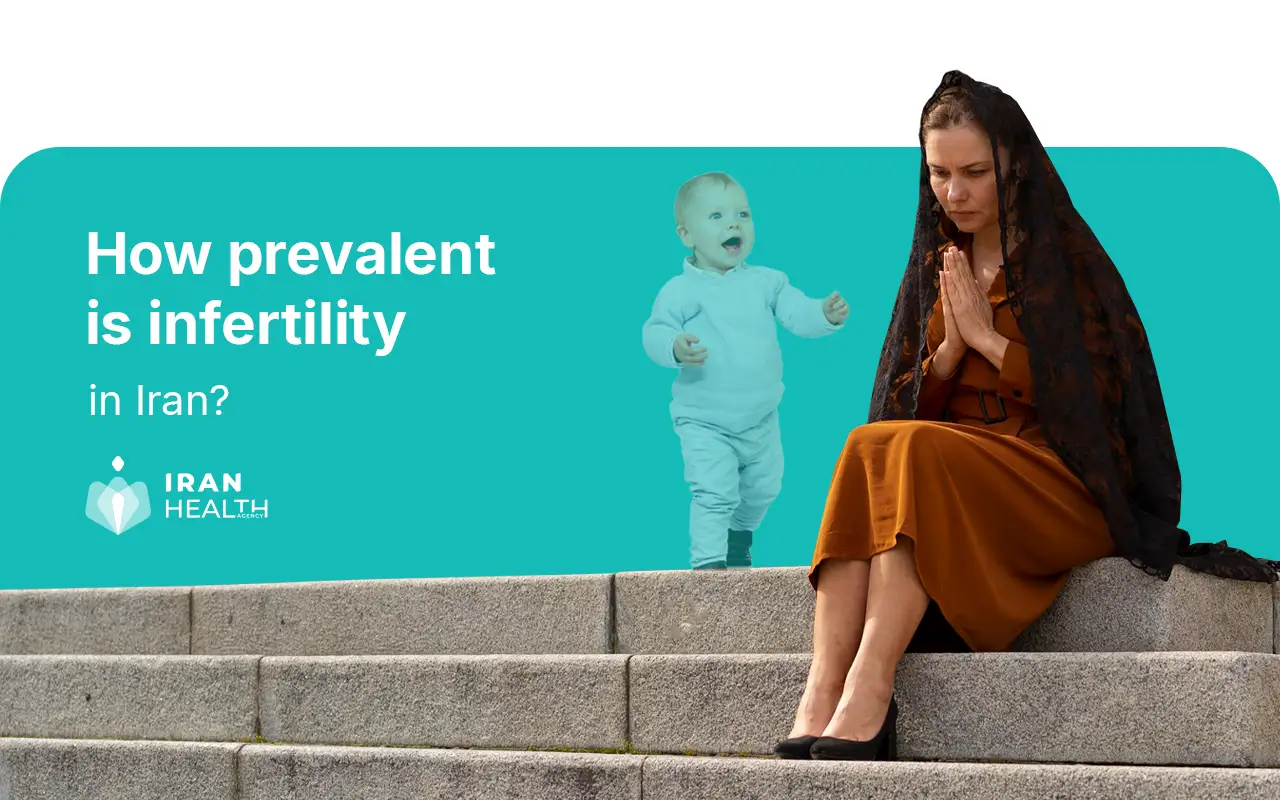



![Can I take a bath during IVF stimulation? [Guide for bathing during IVF]](https://iranhealthagency.com/wp-content/uploads/2024/04/Can-I-take-a-bath-during-IVF-stimulation-300x200.jpg)